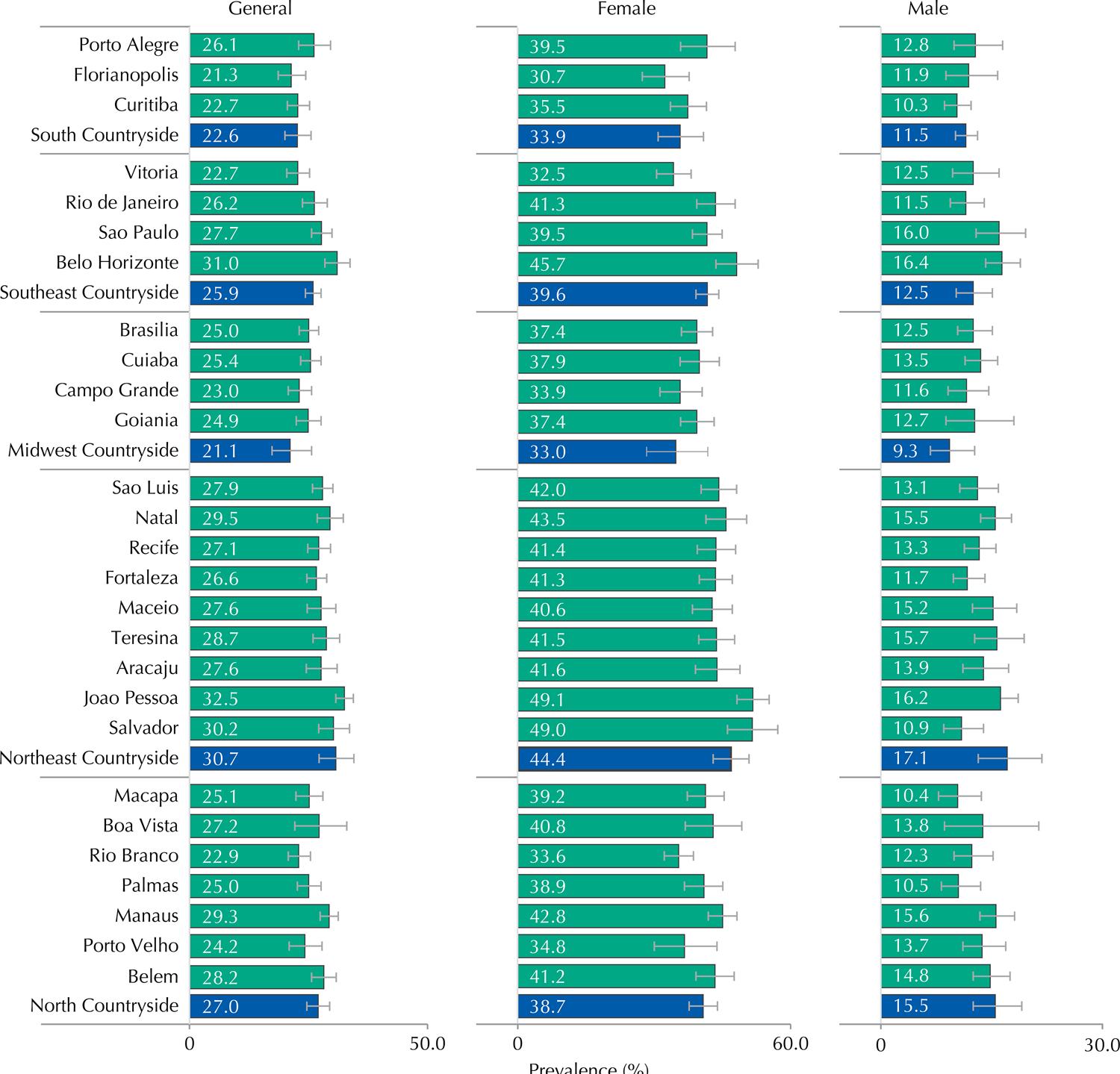ABSTRACT
OBJECTIVE
To evaluate the prevalence of leisure-time physical inactivity in Brazilian adolescents and their association with geographical and sociodemographic variables.
METHODS
The sample was composed by 74,589 adolescents participating in the Study of Cardiovascular Risks in Adolescents (ERICA). This cross-sectional study of school basis with national scope involved adolescents aged from 12 to 17 years in Brazilian cities with more than 100 thousand inhabitants. The prevalence of leisure-time physical inactivity was categorized according to the volume of weekly practice (< 300; 0 min). The prevalences were estimated for the total sample and by sex. Poisson regression models were used to assess associated factors.
RESULTS
The prevalence of leisure-time physical inactivity was 54.3% (95%CI 53.4-55.2), and higher for the female sex (70.7%, 95%CI 69.5-71.9) compared to the male (38.0%, 95%CI 36.7-39.4). More than a quarter of adolescents (26.5%, 95%CI 25.8-27.3) reported not practicing physical activity in the leisure time, a condition more prevalent for girls (39.8%, 95%CI 38.8-40.9) than boys (13.4%, 95%CI 12.4-14.4). For girls, the variables that were associated with physical inactivity were: reside in the Northeast (RP = 1.13, 95%CI 1.08-1.19), Southeast (RP = 1.16, 95%CI 1.11-1.22) and South (RP = 1.12, 95%CI 1.06-1.18); have 16-17 years (RP = 1.06, 95%CI 1.12-1.15); and belong to the lower economic class (RP = 1.33, 95%CI 1.20-1.48). The same factors, except reside in the Southeast and South, were also associated with not practicing physical activity in the leisure time for the same group. In males, as well as the region, being older (p < 0.001) and declaring to be indigenous (RP = 0.37, 95%CI 0.19-0.73) were also associated with not practicing physical activities in the leisure time.
CONCLUSIONS
The prevalence of leisure-time physical inactivity in Brazilian adolescents is high. It presents regional variations and is associated with age and low socioeconomic status. Special attention should be given to girls and to those who do not engage in any physical activity during the leisure time, so that they can adopt a more active lifestyle.
Adolescent; Motor Activity; Sedentary Lifestyle; Prevalence; Cross-Sectional Studies


